Nächste Seite: Webcam und Forum Aufwärts: Übungen Vorherige Seite: i2c, Timer-interrupt, Interrupts
0 0 0 0 0 0
1 0 0 0 1 0
2 0 0 1 0 1
3 0 0 1 1 1
4 0 1 0 0 0
5 0 1 0 1 0
6 0 1 1 0 1
7 0 1 1 1 0
8 1 0 0 0 0
9 1 0 0 1 1
10 1 0 1 0 1
11 1 0 1 1 0
12 1 1 0 0 0
13 1 1 0 1 1
14 1 1 1 0 1
15 1 1 1 1 0
2 0 0 1 0 1
3 0 0 1 1 1
6 0 1 1 0 1
9 1 0 0 1 1
10 1 0 1 0 1
13 1 1 0 1 1
14 1 1 1 0 1
Gruppe 1:
2 0 0 1 0 1
Gruppe 2:
3 0 0 1 1 1
6 0 1 1 0 1
9 1 0 0 1 1
10 1 0 1 0 1
Gruppe 3:
13 1 1 0 1 1
14 1 1 1 0 1
2:3 0 0 1 -
2:6 0 - 1 0
2:10 - 0 1 0
6:14 - 1 1 0
9:13 1 - 0 1
10:14 1 - 1 0
2:3 0 0 1 -
9:13 1 - 0 1
10:14 1 - 1 0
2:6 0 - 1 0
2:10 - 0 1 0
6:14 - 1 1 0
2:3 0 0 1 -
Gruppe 1:
2:6 0 - 1 0
Gruppe 2:
9:13 1 - 0 1
10:14 1 - 1 0
Gruppe 1:
2:10 - 0 1 0
Gruppe 2:
6:14 - 1 1 0
2:3 0 0 1 -
Gruppe 1:
2:6 0 - 1 0
Gruppe 2:
9:13 1 - 0 1
10:14 1 - 1 0
2:6:10:14 - - 1 0
Gruppe 1:
2:10 - 0 1 0
Gruppe 2:
6:14 - 1 1 0
2:10:6:14 - - 1 0
2:3 0 0 1 -
9:13 1 - 0 1
2:6:10:14 - - 1 0
2:10:6:14 - - 1 0
2:3 0 0 1 -
9:13 1 - 0 1
2:6:10:14 - - 1 0
2 3 6 9 10 13 14
2:3 + +
9:13 + +
2:6:10:14 + + + +
2:3 0 0 1 -
9:13 1 - 0 1
2:6:10:14 - - 1 0
Disjunktive Normalform:
y <= (not x3 and not x2 and x1) or
(x3 and not x1 and x0) or
(x1 and not x0);
Konjunktive:
y <= not (
(x3 or x2 or not x1) and
(not x3 or x1 or not x0) and
(not x1 or x0)
);
library ieee;
use ieee.std_logic_1164.all;
entity quine20241025 is
port (
x3, x2, x1, x0: in std_logic;
y: out std_logic
);
end;
architecture behaviour of quine20241025 is
begin
y <= (not x3 and not x2 and x1) or
(x3 and not x1 and x0) or
(x1 and not x0);
end;
library ieee;
use ieee.std_logic_1164.all;
entity quine20241025_testbench is
port (
y: inout std_logic
);
end;
architecture behaviour of quine20241025_testbench is
component quine20241025 is
port (
x3, x2, x1, x0: in std_logic;
y: out std_logic
);
end component;
signal x3, x2, x1, x0: std_logic;
begin
q: quine20241025 PORT MAP (x3=>x3, x2=>x2, x1=>x1, x0=>x0, y=>y);
VHDL:
library ieee;
use ieee.std_logic_1164.all;
entity quine20241025 is
port (
x3, x2, x1, x0: in std_logic;
y: out std_logic
);
end;
architecture behaviour of quine20241025 is
begin
y <= (not x3 and not x2 and x1) or
(x3 and not x1 and x0) or
(x1 and not x0);
end;
library ieee;
use ieee.std_logic_1164.all;
entity quine20241025_testbench is
port (
y: inout std_logic
);
end;
architecture behaviour of quine20241025_testbench is
component quine20241025 is
port (
x3, x2, x1, x0: in std_logic;
y: out std_logic
);
end component;
signal x3, x2, x1, x0: std_logic;
begin
q: quine20241025 PORT MAP (x3=>x3, x2=>x2, x1=>x1, x0=>x0, y=>y);
x0 <= '0' after 0 ns, '1' after 10 ns, '0' after 20 ns, '1' after 30 ns, '0' after 40 ns, '1' after 50 ns, '0' after 60 ns, '1' after 70 ns, '0' after 80 ns, '1' after 90 ns, '0' after 100 ns, '1' after 110 ns, '0' after 120 ns, '1' after 130 ns, '0' after 140 ns, '1' after 150 ns;
x1 <= '0' after 0 ns, '0' after 10 ns, '1' after 20 ns, '1' after 30 ns, '0' after 40 ns, '0' after 50 ns, '1' after 60 ns, '1' after 70 ns, '0' after 80 ns, '0' after 90 ns, '1' after 100 ns, '1' after 110 ns, '0' after 120 ns, '0' after 130 ns, '1' after 140 ns, '1' after 150 ns;
x2 <= '0' after 0 ns, '0' after 10 ns, '0' after 20 ns, '0' after 30 ns, '1' after 40 ns, '1' after 50 ns, '1' after 60 ns, '1' after 70 ns, '0' after 80 ns, '0' after 90 ns, '0' after 100 ns, '0' after 110 ns, '1' after 120 ns, '1' after 130 ns, '1' after 140 ns, '1' after 150 ns;
x3 <= '0' after 0 ns, '0' after 10 ns, '0' after 20 ns, '0' after 30 ns, '0' after 40 ns, '0' after 50 ns, '0' after 60 ns, '0' after 70 ns, '1' after 80 ns, '1' after 90 ns, '1' after 100 ns, '1' after 110 ns, '1' after 120 ns, '1' after 130 ns, '1' after 140 ns, '1' after 150 ns;
end;
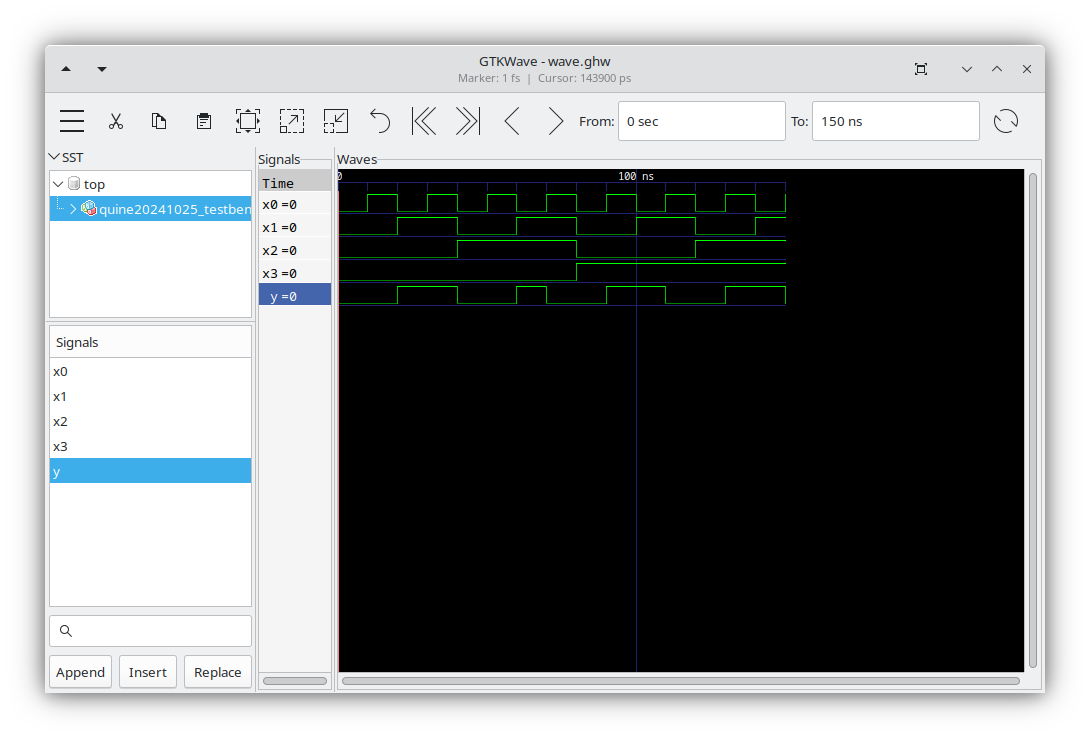
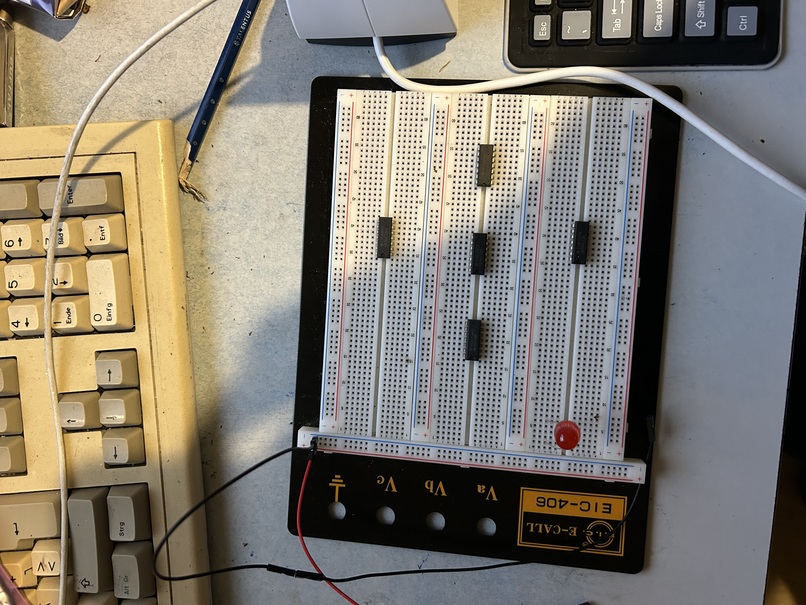
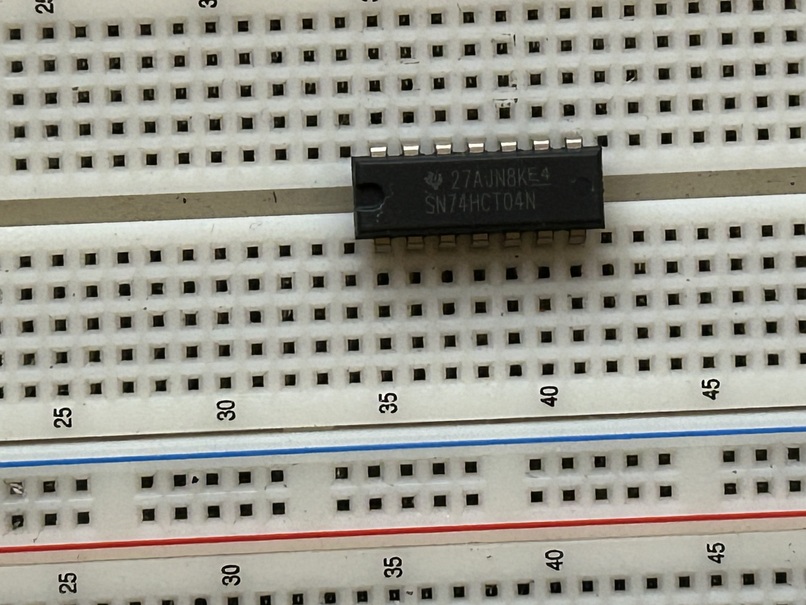

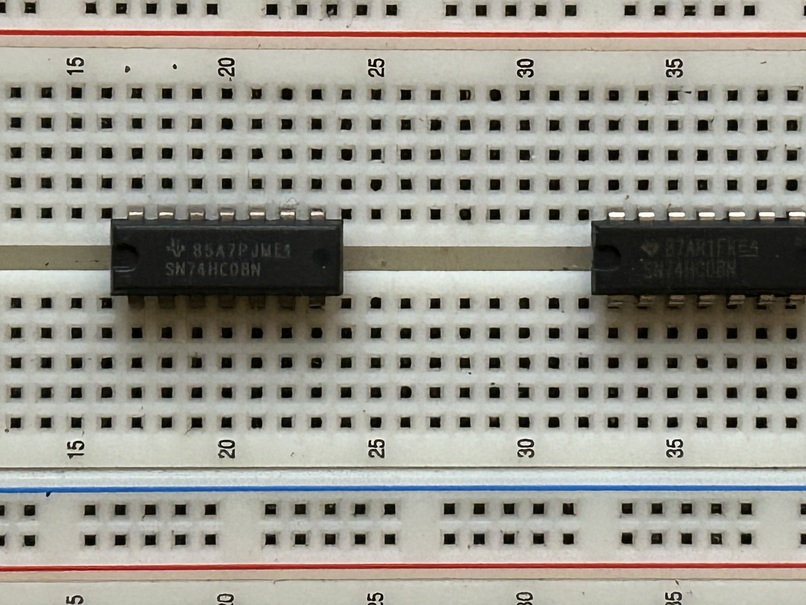
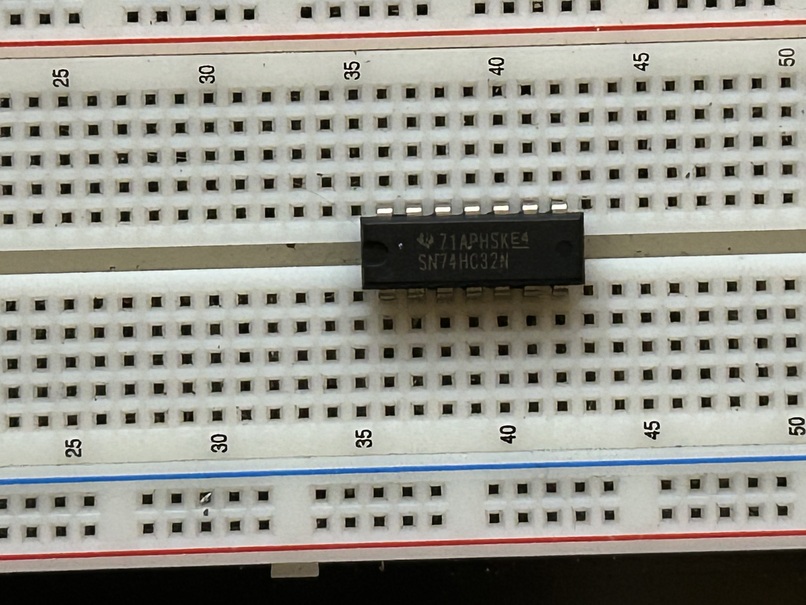
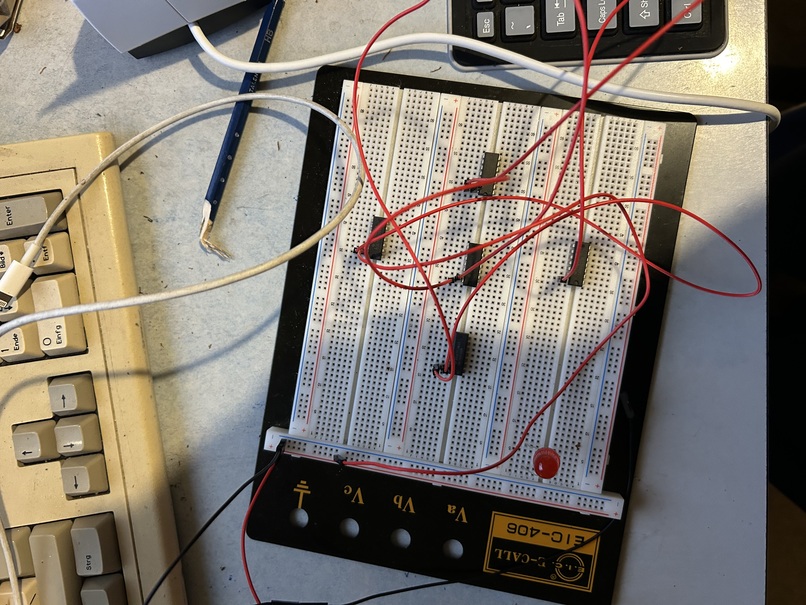

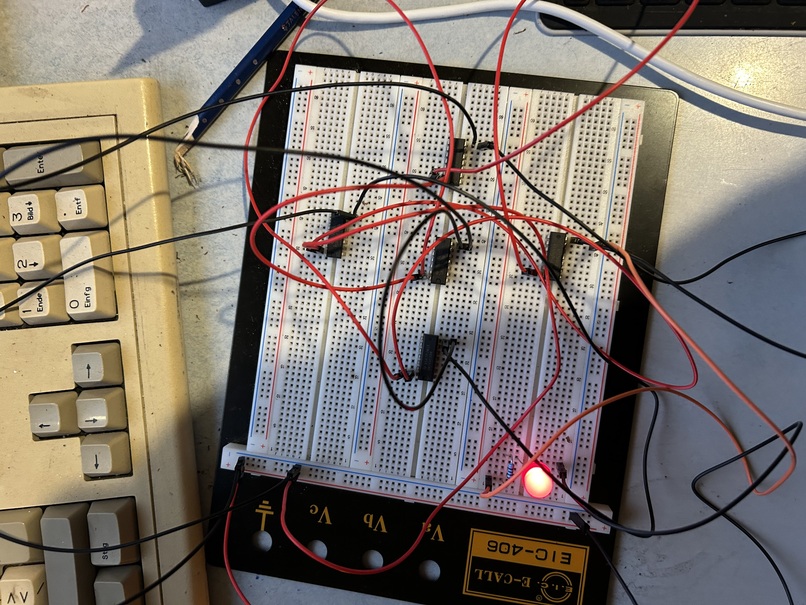
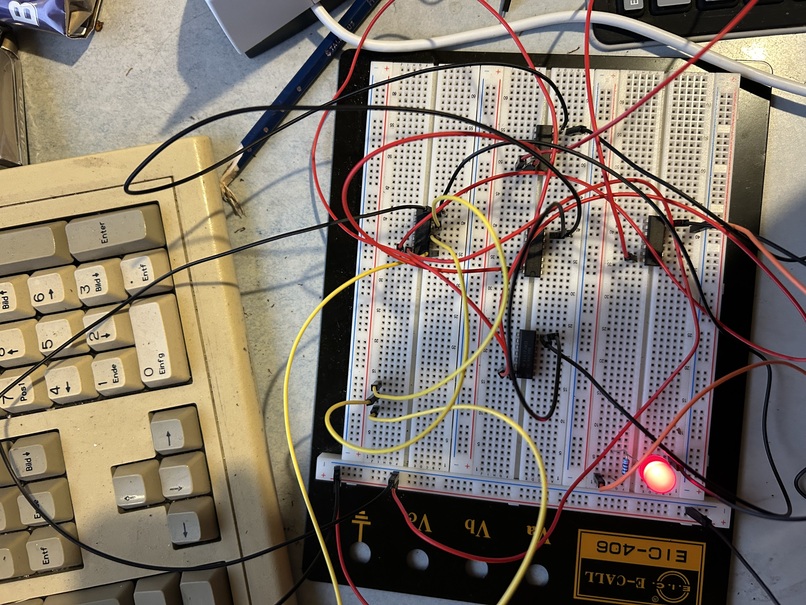
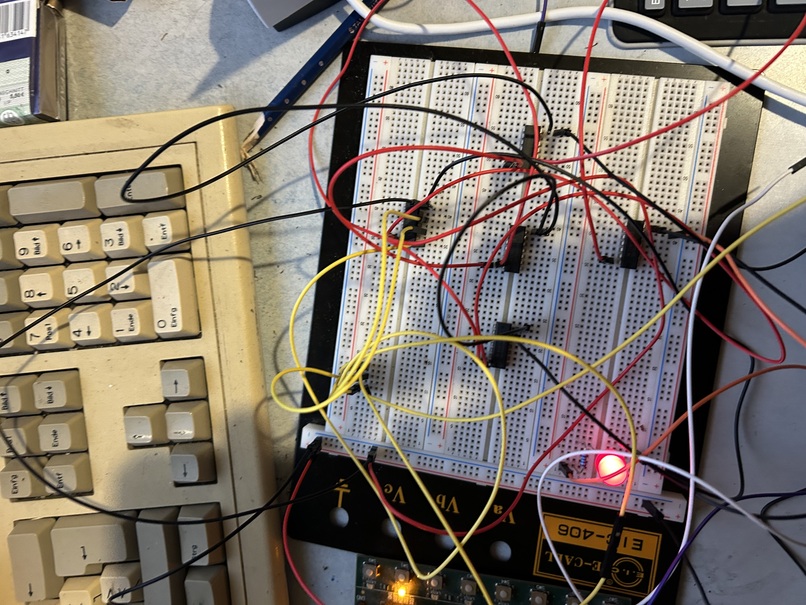
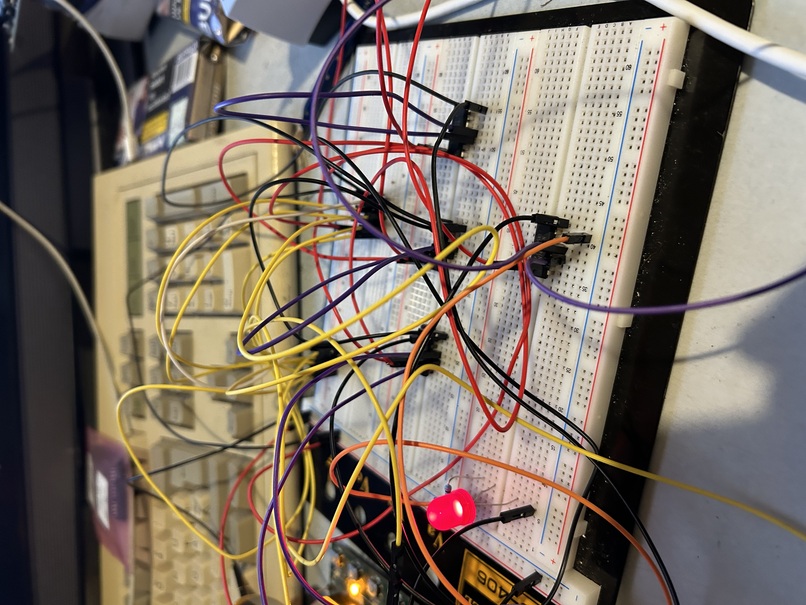
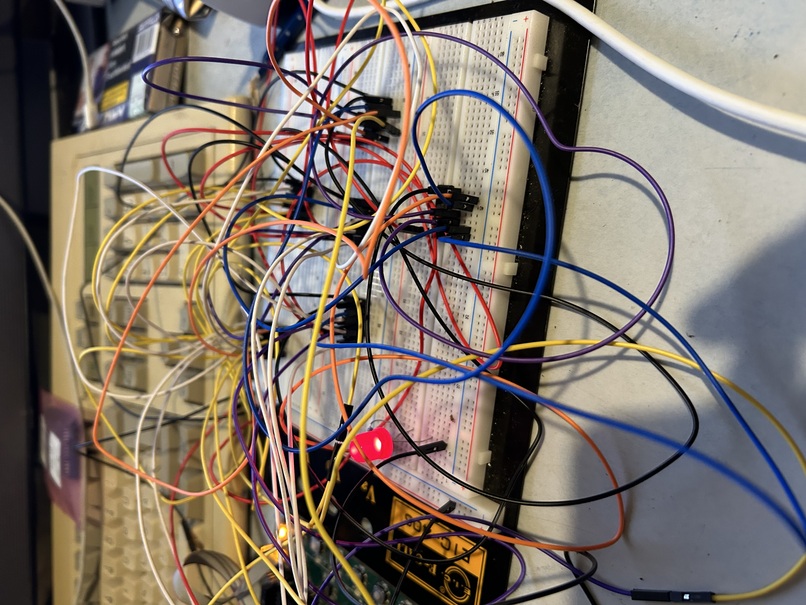

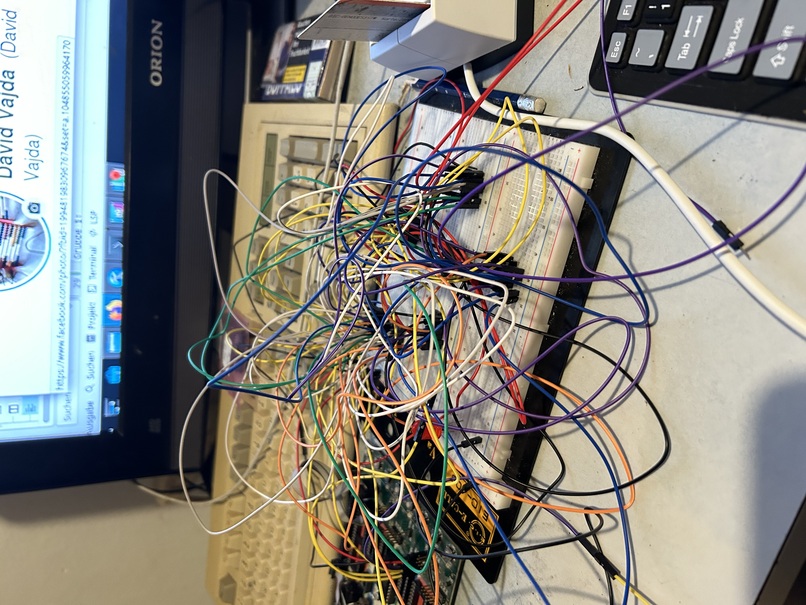
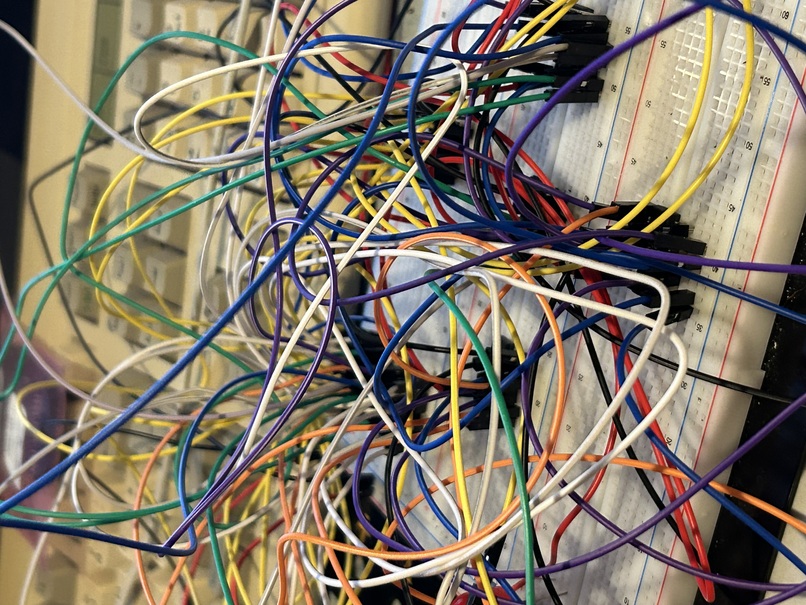
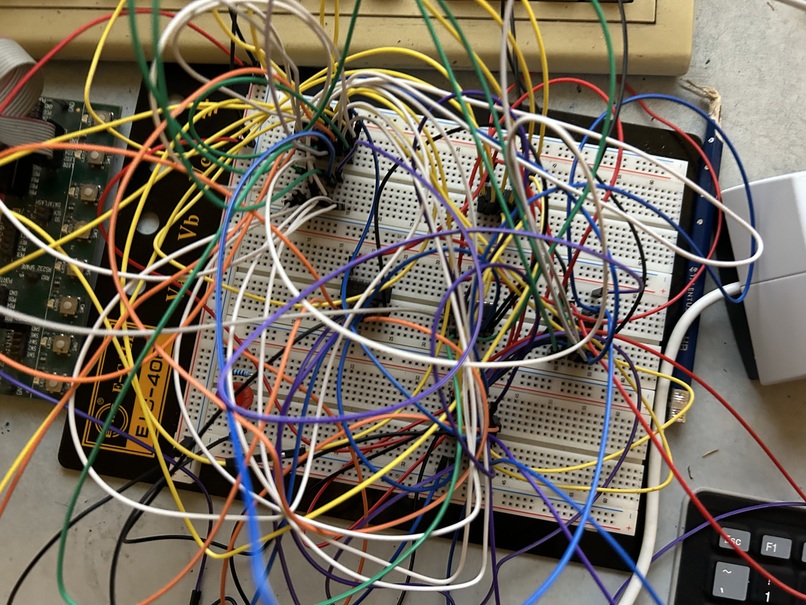
; hier ist ja der alte Quelltext, zum hochzaehlen der Eingangsvariablen, er erzeugt, siehe Video, ich werde die warteschleife jetzt durch ein anstaendiges Timer Interrupt ersetzen, vorher muss ich gucken, wie man den Atmega8 auf dem STK 500 ueber avrdude auf 4 MHz taktet
.include "m8def.inc" ldi r16, HIGH (RAMEND) out SPH, r16 ldi r16, LOW (RAMEND) out SPL, r16 ldi r16, 0xff out DDRD, r16 out DDRB, r16 ldi r16, 0x01 loop1: mov r17, r16 com r17 out PORTB, r17 out PORTD, r16 rcall sleep inc r16 cpi r16, 0b00010000 brne loop1 ldi r16, 0x00 rjmp loop1 sleep: push r16 push r17 push r18 ldi r16, 0xff sleep_loop1: dec r16 ldi r17, 0xff sleep_loop2: dec r17 ldi r18, 0x08 sleep_loop3: dec r18 cpi r18, 0x01 brne sleep_loop3 cpi r17, 0x01 brne sleep_loop2 cpi r16, 0x01 brne sleep_loop1 pop r18 pop r17 pop r16 ret
ich habe herausgefunden, ich muss nichts aendern, die CPU laeuft bereits, mit 3,686 MHz, selbst, wenn sie es nicht tun wuerde, ich muesste es bei den Timer Interrupts richtig handhaben. hier die Parameter fuer avrdude um den Fuses auszu lesen
root@work:/home/david# avrdude -c stk500 -p atmega8 -P /dev/ttyS3 -n -vHabe ich hier gefunden https://www.mikrocontroller.net/articles/AVR_Fuses muss man auch auswendig lernen. Es ist nicht nur notwendig heraus zu finden, wie ich die Fuses aendere, sondern wie sie ueberhaupt sind, Ausgabe:
avrdude: Version 7.1
Copyright the AVRDUDE authors;
see https://github.com/avrdudes/avrdude/blob/main/AUTHORS
System wide configuration file is /etc/avrdude.conf
User configuration file is /root/.avrduderc
User configuration file does not exist or is not a regular file, skipping
Using Port : /dev/ttyS3
Using Programmer : stk500
AVR Part : ATmega8
Chip Erase delay : 10000 us
PAGEL : PD7
BS2 : PC2
RESET disposition : possible i/o
RETRY pulse : SCK
Serial program mode : yes
Parallel program mode : yes
Timeout : 200
StabDelay : 100
CmdexeDelay : 25
SyncLoops : 32
PollIndex : 3
PollValue : 0x53
Memory Detail :
Block Poll Page Polled
Memory Type Alias Mode Delay Size Indx Paged Size Size #Pages MinW MaxW ReadBack
----------- -------- ---- ----- ----- ---- ------ ------ ---- ------ ----- ----- ---------
eeprom 4 20 128 0 no 512 4 0 9000 9000 0xff 0xff
flash 33 10 64 0 yes 8192 64 128 4500 4500 0xff 0x00
lfuse 0 0 0 0 no 1 1 0 2000 2000 0x00 0x00
hfuse 0 0 0 0 no 1 1 0 2000 2000 0x00 0x00
lock 0 0 0 0 no 1 1 0 2000 2000 0x00 0x00
signature 0 0 0 0 no 3 1 0 0 0 0x00 0x00
calibration 0 0 0 0 no 4 1 0 0 0 0x00 0x00
Programmer Type : STK500V2
Description : Atmel STK500
Programmer Model: STK500
Hardware Version: 2
Firmware Version Controller : 2.10
Topcard : Unknown
Vtarget : 4.6 V
SCK period : 35.3 us
Varef : 4.5 V
Oscillator : 3.686 MHz
avrdude: AVR device initialized and ready to accept instructions
avrdude: device signature = 0x1e9307 (probably m8)
avrdude done. Thank you.
funktioniert bestens und jetzt sieht man, es stimmt mit den Sekunden
.include "m8def.inc"
.def temp = r16
.def leds = r17
.def seconds = r18
.org 0x0000
rjmp start
.org OVF0addr
rjmp timer0_overflow
start:
ldi temp, HIGH(RAMEND)
out SPH, temp
ldi temp, LOW(RAMEND)
out SPL, temp
ldi temp, 0xFF
out DDRB, temp
out DDRD, temp
ldi leds, 0x00
ldi seconds, 0x00
ldi temp, (1<<CS02) | (1<<CS00)
out TCCR0, temp
ldi temp, (1<<TOIE0)
out TIMSK, temp
sei
loop: rjmp loop
timer0_overflow:
cpi seconds, 0x04
brlt no_led_toggle
cpi leds, 0b00000111
brlt goon
ldi leds, 0x00
rjmp no_inc
goon:
inc leds
no_inc:
com leds
out PORTB, leds
com leds
out PORTD, leds
ldi seconds, 0x00
no_led_toggle:
inc seconds
reti
so ist besser
.include "m8def.inc"
.def temp = r16
.def leds = r17
.def seconds = r18
.org 0x0000
rjmp start
.org OVF0addr
rjmp timer0_overflow
start:
ldi temp, HIGH(RAMEND)
out SPH, temp
ldi temp, LOW(RAMEND)
out SPL, temp
ldi temp, 0xFF
out DDRB, temp
out DDRD, temp
ldi leds, 0x00
ldi seconds, 0x00
ldi temp, (1<<CS02) | (1<<CS00)
out TCCR0, temp
ldi temp, (1<<TOIE0)
out TIMSK, temp
sei
loop: rjmp loop
timer0_overflow:
cpi seconds, 0x04
brlt no_led_toggle
cpi leds, 0b00000111
brlt goon
ldi leds, 0x00
rjmp no_inc
goon:
inc leds
no_inc:
com leds
out PORTB, leds
com leds
out PORTD, leds
ldi seconds, 0x00
no_led_toggle:
inc seconds
reti
x2 x1 x0 y 0 0 0 0 0 0 1 1 0 1 0 0 0 1 1 1 1 0 0 1 1 0 1 0 1 1 0 0 1 1 1 0und
0 0 0 0 0 0
1 0 0 0 1 0
2 0 0 1 0 1
3 0 0 1 1 1
4 0 1 0 0 0
5 0 1 0 1 0
6 0 1 1 0 1
7 0 1 1 1 0
8 1 0 0 0 0
9 1 0 0 1 1
10 1 0 1 0 1
11 1 0 1 1 0
12 1 1 0 0 0
13 1 1 0 1 1
14 1 1 1 0 1
15 1 1 1 1 0
y <= (not x3 and not x2 and x1) or
(x3 and not x1 and x0) or
(x1 and not x0);
und
0 0 0 0 0 0
1 0 0 0 1 0
2 0 0 1 0 1
3 0 0 1 1 1
4 0 1 0 0 1
5 0 1 0 1 0
6 0 1 1 0 1
7 0 1 1 1 1
8 1 0 0 0 1
9 1 0 0 1 1
10 1 0 1 0 0
11 1 0 1 1 1
12 1 1 0 0 0
13 1 1 0 1 0
14 1 1 1 0 1
15 1 1 1 1 1
y <= (not x3 and x1) or
(x3 and not x2 and not x1) or
(x2 and x1) or
(not x3 and x2 and not x0) or
(x1 and x0);
ein kleiner fehler ist drin, dafuer ist es diesmal ein OR mit 5 eingaengen, ich will gleich was zu essen kaufen und habe schon zwei schaltungen gebaut.
ich werde ihn nicht nachtraeglich suchen